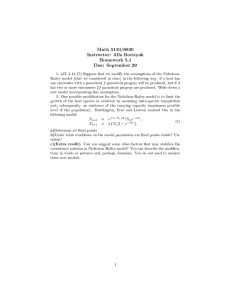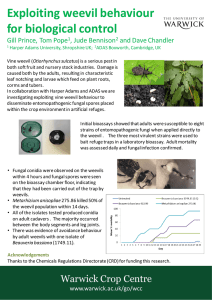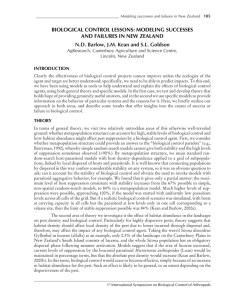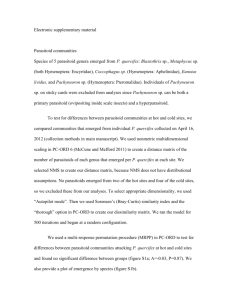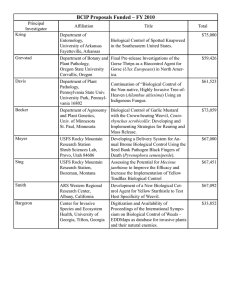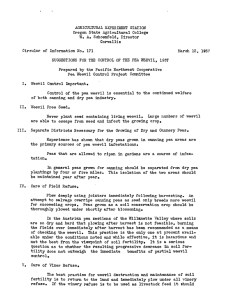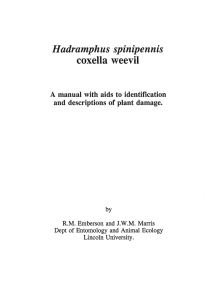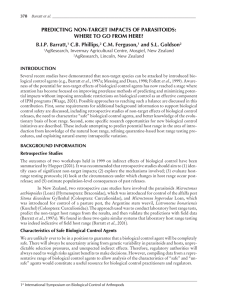BIOLOGICAL CONTROL LESSONS FROM A DEPAUPERATE ECOSYSTEM
advertisement
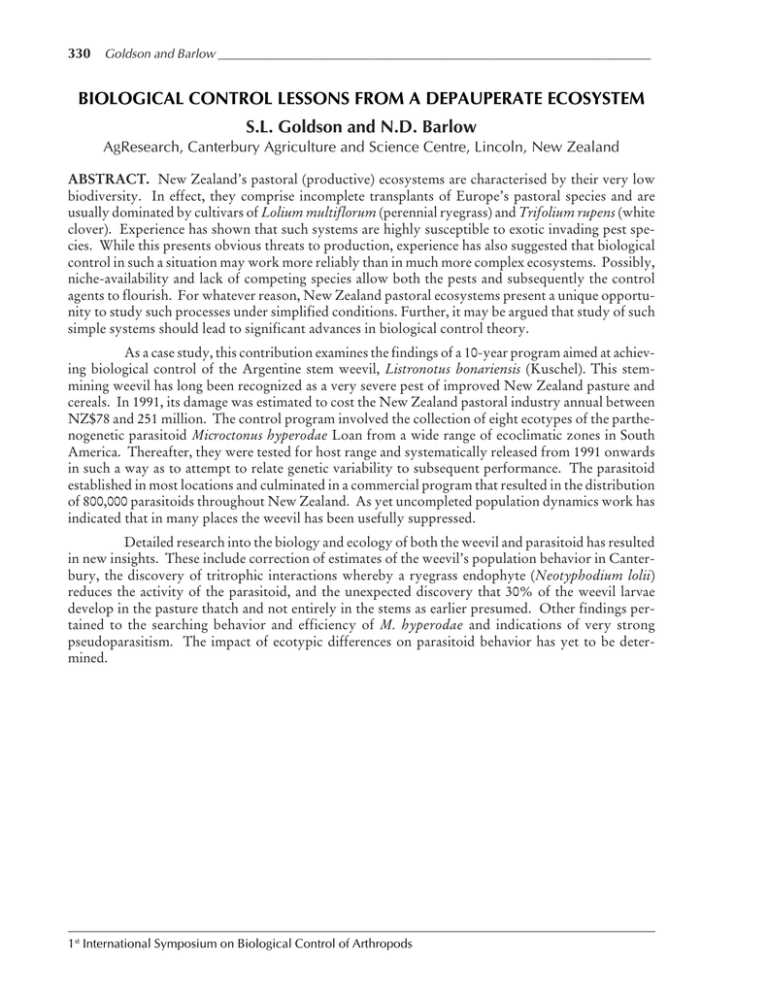
330 Goldson and Barlow _____________________________________________________________________ BIOLOGICAL CONTROL LESSONS FROM A DEPAUPERATE ECOSYSTEM S.L. Goldson and N.D. Barlow AgResearch, Canterbury Agriculture and Science Centre, Lincoln, New Zealand ABSTRACT. New Zealand’s pastoral (productive) ecosystems are characterised by their very low biodiversity. In effect, they comprise incomplete transplants of Europe’s pastoral species and are usually dominated by cultivars of Lolium multiflorum (perennial ryegrass) and Trifolium rupens (white clover). Experience has shown that such systems are highly susceptible to exotic invading pest species. While this presents obvious threats to production, experience has also suggested that biological control in such a situation may work more reliably than in much more complex ecosystems. Possibly, niche-availability and lack of competing species allow both the pests and subsequently the control agents to flourish. For whatever reason, New Zealand pastoral ecosystems present a unique opportunity to study such processes under simplified conditions. Further, it may be argued that study of such simple systems should lead to significant advances in biological control theory. As a case study, this contribution examines the findings of a 10-year program aimed at achieving biological control of the Argentine stem weevil, Listronotus bonariensis (Kuschel). This stemmining weevil has long been recognized as a very severe pest of improved New Zealand pasture and cereals. In 1991, its damage was estimated to cost the New Zealand pastoral industry annual between NZ$78 and 251 million. The control program involved the collection of eight ecotypes of the parthenogenetic parasitoid Microctonus hyperodae Loan from a wide range of ecoclimatic zones in South America. Thereafter, they were tested for host range and systematically released from 1991 onwards in such a way as to attempt to relate genetic variability to subsequent performance. The parasitoid established in most locations and culminated in a commercial program that resulted in the distribution of 800,000 parasitoids throughout New Zealand. As yet uncompleted population dynamics work has indicated that in many places the weevil has been usefully suppressed. Detailed research into the biology and ecology of both the weevil and parasitoid has resulted in new insights. These include correction of estimates of the weevil’s population behavior in Canterbury, the discovery of tritrophic interactions whereby a ryegrass endophyte (Neotyphodium lolii) reduces the activity of the parasitoid, and the unexpected discovery that 30% of the weevil larvae develop in the pasture thatch and not entirely in the stems as earlier presumed. Other findings pertained to the searching behavior and efficiency of M. hyperodae and indications of very strong pseudoparasitism. The impact of ecotypic differences on parasitoid behavior has yet to be determined. 1st International Symposium on Biological Control of Arthropods
